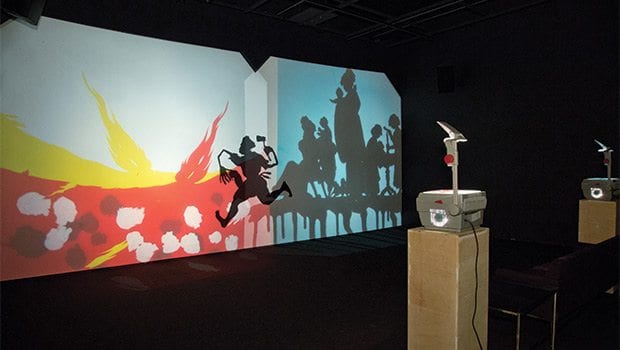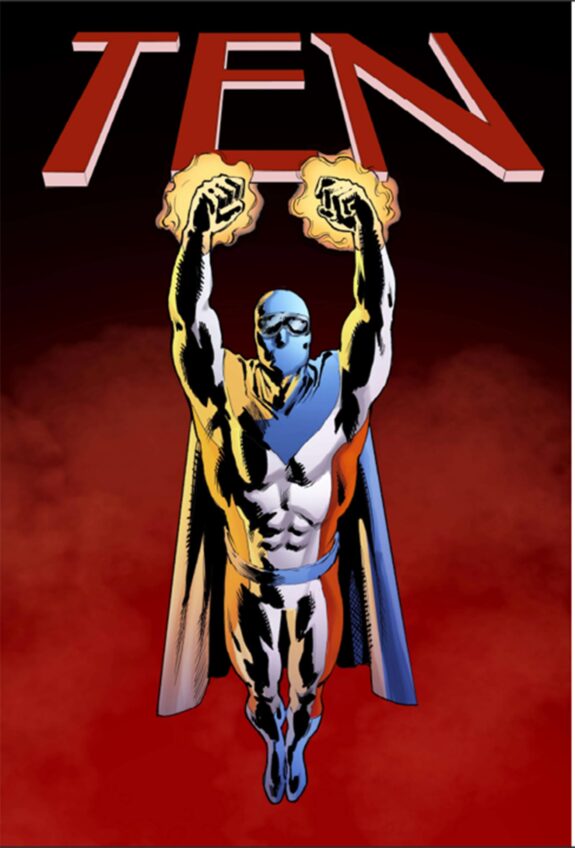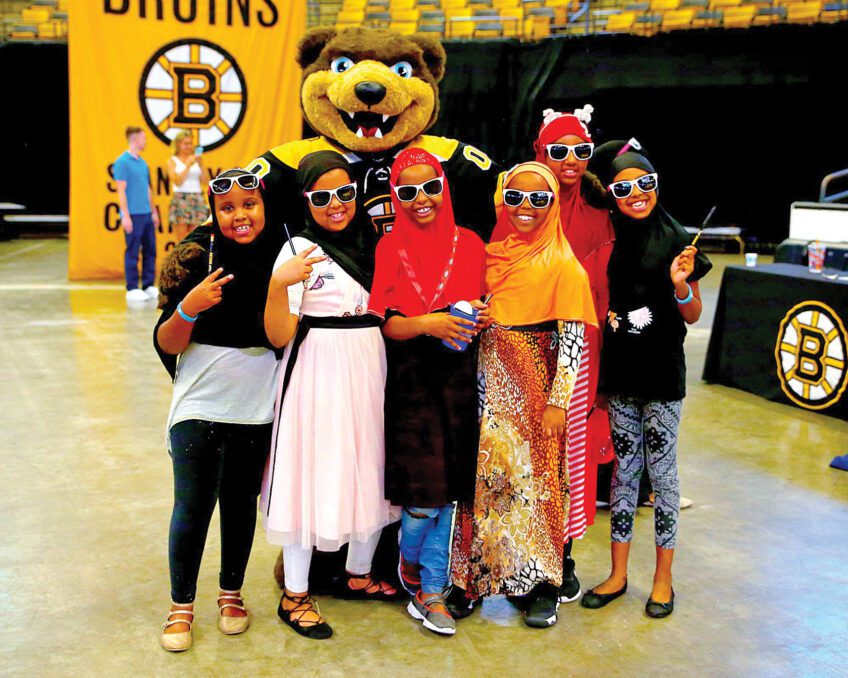Unfinished business: Kara Walker’s artwork deals with arenas of race, gender and identity

Renowned contemporary artist Kara Walker is known for elegant, provocative murals that employ hand-cut stencils to render the persistent legacy of slavery. She casts her silhouetted figures in violent or sexual scenes that evoke unfinished business in the arenas of race, gender and identity.
Walker spoke at the Institute of Contemporary Art Boston last Thursday night, where one of her wall-sized installations is on display.

Author: Photo: Sari Goodfriend PhotographyKara Walker
Outfitted in a black shirt, tights and boots, Walker, 44, who has the lithe figure of a dancer, showed slides of works over two decades while reflecting on the instincts and interests that have shaped her career.
“There’s a narrative framework to all my work,” Walker told the audience that packed the 325-seat theater.
While in college studying painting, Walker began to feel that, as an African American and as a woman, she needed to create her own “origin story.”
Other African American artists — including Lorraine O’Grady, Carrie Mae Weems and Lorna Simpson — were also exploring issues of race, gender and identity. But Walker was coming up in a new generation and had her own stories to tell.
By the time she graduated from the Rhode Island School of Design (MFA ’94), she had discovered a medium suited to her story-telling instincts: the old-fashioned, delicate art of fashioning silhouetted figures out of hand-cut stencils.
Although more commonly associated with frilly valentines than politically charged art, hand-cut silhouettes also have been a medium of choice for another artist, South African William Kentridge. Silhouetted figures populate his black and white prints and animations, which chronicle with dry humor apartheid’s toll on both white and non-white South Africans.
Using a tool associated with small, intimate scenes of domestic life and women’s work, Walker brings to this medium a taste for the epic stirred by her study of nineteenth century painting and its rendering of grand historic dramas.
Noting that silhouettes lend themselves to storytelling, Walker said that she left painting behind but applied to her new medium the history painter’s view of portraits “as characters on a stage,” with the painting providing their stage.
Walker’s stories show us that things are not what they seem to be, through hallucinatory, topsy-turvy images that cast her characters in obscene scenarios. By borrowing ready-made caricatures familiar to an American audience via pop culture, she gives her revisionist histories a head start.
Her silhouettes summon clichéd characters of the Old South recognizable to anyone acquainted with “Gone with the Wind,” “Song of the South” or the “Uncle Remus” stories, in which sunny, subservient blacks serve their grateful white patrons. But her Southern belles, plantation grandees, nannies, old folks, pig-tailed girls and barefoot boys perform lewd or violent acts with one another in her tableaux, which render the legacy of slavery as an abiding hell. They call to mind the surreal scenes of 16th-century painter Hieronymus Bosch — if he had a sense of humor as well as horror.
Walker’s installations also draw from canonical works that address racial injustice, including Harriet Beecher Stowe’s 1852 novel, “Uncle Tom’s Cabin” and Mark Twain’s humorous but scathing 1884 masterpiece, “The Adventures of Huckleberry Finn.”
The power of her visual storytelling quickly gained the attention of critics, curators and fellow artists, particularly in New York. In 1997, at age 28, Walker became one of the youngest recipients of a MacArthur Foundation “Genius Grant” fellowship.
Her wall-sized installations are on view at three local museums. The ICA is showing a mural inspired by Twain’s novel. At the Museum of Fine Arts, “The Rich Soil Down There” (2002), displays silhouettes of stereotypical figures from the Old South. And at the Davis Museum at Wellesley College, a slide projection evokes the 1831 slave rebellion led by Nat Turner.
Walker completed her talk by speaking of her 2014 commission for Creative Time, a New York-based public art organization that funded her largest and most famous work to date: a 35-foot-high, 75-foot-long and 26-foot wide mammy cast in the empowering pose of a grand sphinx.
Entirely composed of sugar, Walker’s sphinx presided for eight weeks in the cavernous setting of the former Domino Sugar Factory in Brooklyn before it decomposed, on schedule. Like the factory, slated for demolition, the sculpture was a temporary presence.
Walker recalled her research as she planned a site-specific project for the factory, which during Civil War was the largest sugar refining operation in the world. She cited an influential book about the sugar industry, “Sweetness and Power: The Place of Sugar in Modern History,” by anthropologist Sidney W. Mintz, and its chronicle of worker exploitation. “But I didn’t want my project to be finger-wagging,” said Walker. “I wanted to create an icon. What people gravitate toward are big objects in ruins.”
Once she settled on the idea of creating a sphinx, said Walker, what sealed her plan was the sight of a bus going by with the word “sphinx” written on its side.
Her sculpture merged two stereotypes of the African American female: with her kerchief-wrapped hair, she was a mammy; and with her enormous breasts and buttocks, she also was a highly erotic figure.
More than 130,000 people came to see her sculpture, which she entitled “… the Marvelous Sugar Baby an Homage to the unpaid and overworked Artisans who have refined our Sweet tastes from the cane fields to the Kitchens of the New World…”
“That was a season to live down,” said Walker, who could imagine tackling a project of this magnitude again, but not every year. “It would have to be special,” said Walker. “It would have to be needed.”






